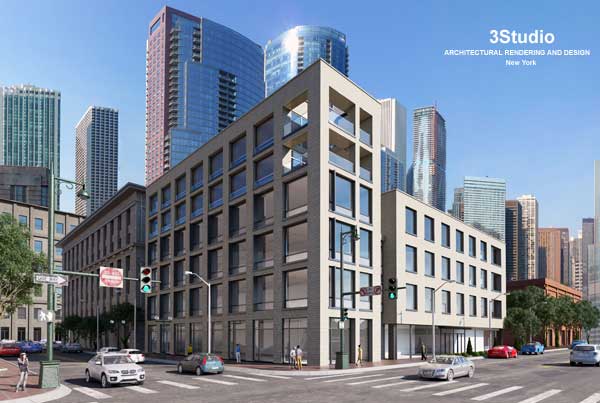Rendering in the context of 3D presentation technology refers to the process of converting 3D models into 2D images or animations that can be viewed on various devices like computers, televisions, or mobile screens. This process is essential in a wide range of industries, including architecture, product design, gaming, film, and virtual reality, to communicate design ideas or tell stories effectively.
There are several aspects to consider when discussing 3D rendering for presentation:
1. **Rendering Engines**: Software that translates 3D models into final images. Popular engines include V-Ray, Redshift, Arnold, Unreal Engine, Unity, and Blender’s Cycles.
2. **Real-time vs. Offline Rendering**:
– Real-time rendering is used in games and simulations where images must be generated on the fly as the user interacts with the environment. It often relies on graphics processing units (GPUs) to compute images quickly, at the expense of some level of visual realism.
– Offline rendering (or pre-rendering) is used when the highest quality images are required, such as for movies. It is a time-consuming process that can take hours or days for each frame, depending on complexity.
3. **Materials and Texturing**: The realism of the rendered images depends on the quality of the materials and textures applied to the 3D models. Materials define the reflective, absorption, and scattering properties of surfaces, while textures provide detailed color, bump, and displacement maps.
4. **Lighting**: Accurately simulating how light interacts with objects and environments is key to photorealistic renders. This involves understanding different lighting techniques, like three-point lighting, global illumination, and High Dynamic Range Imaging (HDRI) for environmental lighting.
5. **Shaders**: Special programs that calculate how light and material interact on a per-pixel or per-vertex basis for different surfaces, affecting the final color, brightness, and contrast of each point on the object.
6. **Ray Tracing**: A rendering method that simulates the physical behavior of light to produce highly realistic images by tracing the path of light as pixels in an image plane and simulating effects such as reflections, refractions, and shadows.
7. **Ambient Occlusion**: A shading method used to calculate how exposed each point in a scene is to ambient lighting. It helps to create more realistic shadows, particularly in the creases and crevices of 3D objects.
8. **Photorealism**: The goal is often to make renders indistinguishable from real life, involving techniques such as depth of field, motion blur, and camera lens effects.
9. **Non-Photorealistic Rendering** (NPR): This focuses on enabling a range of artistic styles for 3D renderings, other than realism, such as cel-shading, which is often used in animation to create a hand-drawn look.
10. **Software Integration**: 3D presentation often involves integrating rendering software with other tools like 3D modeling, animation, and video editing to create a comprehensive pipeline from model to final render.
11. **Hardware**: High-performance hardware is often required for efficient rendering, including multi-core CPUs, high-end GPUs, and substantial amounts of RAM.
Emerging rendering techniques involve AI and machine learning to help reduce rendering times and improve image quality, known as denoising. Also, cloud-based rendering services are becoming popular, as they allow individuals and companies to leverage massive computational power on a pay-per-use basis without investing in expensive local hardware.
Increasing numbers of architects, interior designers, and real estate developers are solving traditional problems by applying the latest 3-D presentation technology such as architectural renderings and 3-D digital drawings to their needs, which enables prospective clients, investors, and buyers to visualize any architectural design and clearly envision what the building exterior or the interior space will look like.
If you need to convince key decision-makers, 3D visualization & fly-through animation will make the most significant impact and difference. There are many amazing advantages to rendering your architectural design in 3D.
Architectural rendering allows you and your partners to visualize a conceptualized structure way before it’s built, making design and decorating choices extremely easier and more natural. We know that a picture costs a thousand words, however not every picture can successfully compete in today’s visual communication environment and win your new client or design competition.
When you spend your marketing budget you need to think twice and remember that the beauty of your project is in the details, and every tiny detail plays a crucial role in selling your idea or property. If marketing rendering is cheap and looks traditionally hand drawn, chances are the result will be completely opposite to what you wanted your pre-sale marketing to be. Don’t gamble with the future of your project, make sure you present your creation in the best possible way.
Architectural rendering has to be very attractive, and consist of accurate details, realistic finishes, professional landscaping and background, as well as lighting and shadows. If the 3-D rendering that you are about to order looks exactly like a professional architectural photograph, then it’s a clear sign that you are on the right track. Only photo-realistic 3-D rendering can fully guarantee that you will eliminate all flows of your design idea. Besides great design study that mostly helps you and your architect during the planning stages, architectural renderings and other 3-D visualization solutions allow you to obtain the most outstanding marketing tools for your pre-sale campaign.





